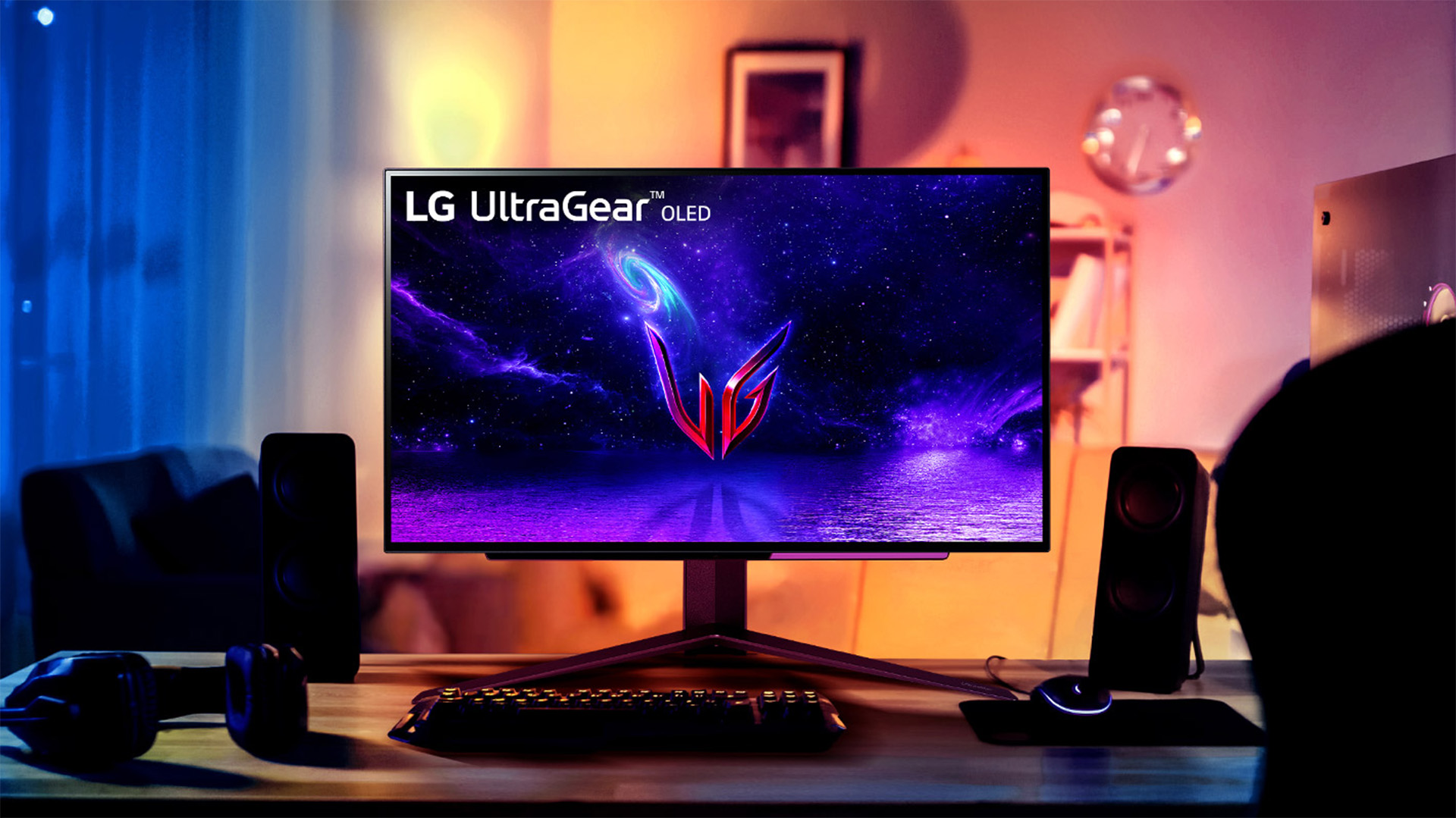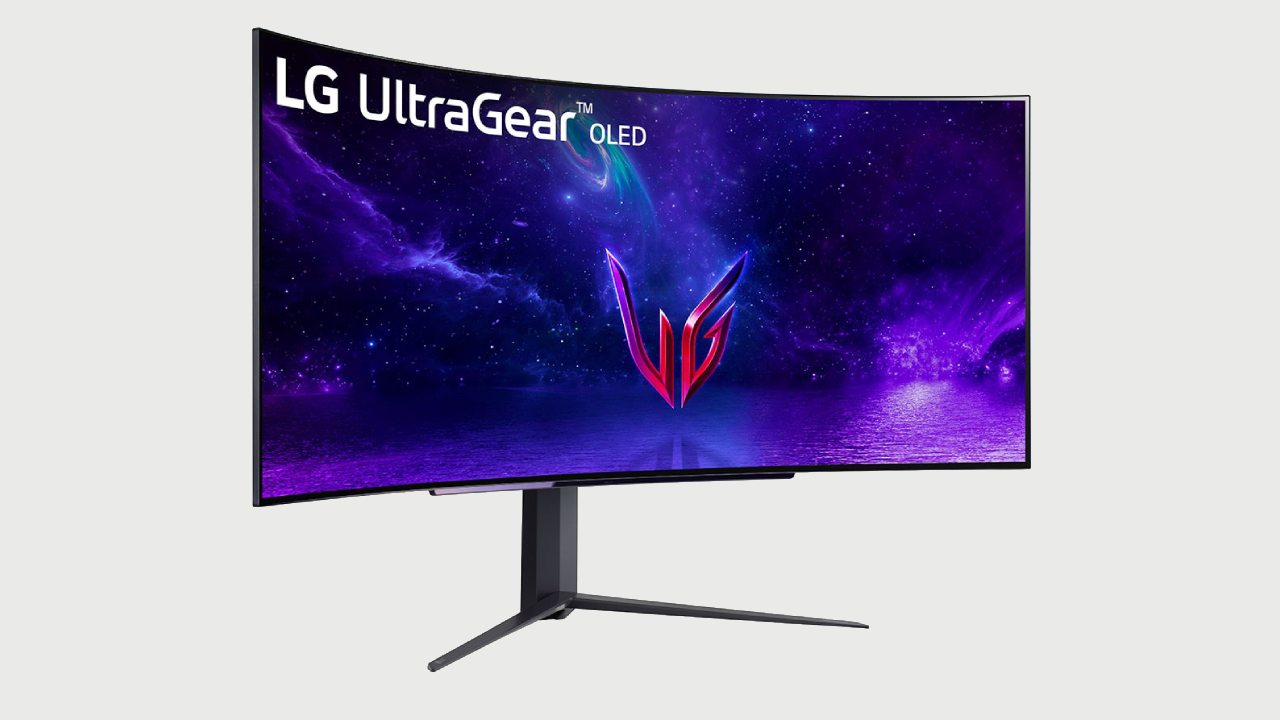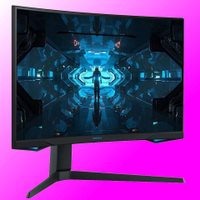LG's first OLED gaming monitors are super fast but not so bright
27-inch and 45-inch panels hit 0.03ms but only 200 nits.

LG's has listed its first OLED gaming monitors, the 27-inch LG UltraGear 27GR95QE-B and the 45-inch LG UltraGear 45GR95QE-B, with full specs and prices. The good news is the stellar 0.03ms response shared by both panels. The bad? Claimed brightness of just 200 nits. Hold that thought, because the brightness rating thing, that's a little complicated.
Starting with the LG UltraGear 27GR95QE-B, in many ways it's a pretty conventional 27-inch 16:9 panel with the classic 1440p native resolution. It tops out at 240Hz and covers 98.5% of the DCI-P3 gamut. All good stuff, but nothing you haven't already seen.
The fun stuff starts with the 0.03ms response. That's measured via the traditional grey-to-grey measure, which is a little odd given it exists to flatter the slow responses of LCD panels at either end of the response curve. Whatever, it's still getting on for two orders of magnitude better than the 1ms that the best existing IPS and VA-type LCD monitors achieve by the same metric. It's a very fast screen.
The contrast ratio of 1.5M to one is likewise totally stellar. In practice, OLED panels essentially have infinite contrast thanks to the ability control lighting on a per-pixel basis and fully switch pixels off.
If that's the good news, one clearly less impressive spec is brightness. LG rates the panel at 200 nits at 25% APL. The 25% APL bit means the panel can achieve 200 nits in an area covering 25% of the whole screen.
The thing about OLED panels is that the brightness they can achieve varies according to how much of the panel you are lighting up. A traditional LCD monitor has a big, dumb backlight blazing away at the same brightness all the time and uses the LCD panel to control how of that light might passes through. But with an OLED panel, you're turning on each pixel individually and on demand. So, more pixels means more power and more heat.

Anyway, we haven't got a full picture of how the new LG panel performs across various APLs. We do know it's rated at 120 nits for full screen coverage or 100% APL. But when it comes to rendering HDR scenes, the really bright bits are typically less than 25% of the screen area. So, the LG UltraGear 27GR95QE-B will certainly go over 200 nits for small, bright details. We just don't know by how much.
The biggest gaming news, reviews and hardware deals
Keep up to date with the most important stories and the best deals, as picked by the PC Gamer team.
Moreover, due to the very high contrast of OLED panels, they don't need to hit the same highs as LCD to achieve good HDR performance. However, for context, it's worth noting that the Alienware 34 QD-OLED AW3423DW has a 25% APL rating of 370 nits. So even by OLED standards, this new LG panel isn't the brightest.
As for its sibling, the 45GR95QE-B, it has largely the same specifications, except it's a curved 45-inch panel with a 3,440 by 1,440 pixel resolution. That's a pretty low resolution for such a large screen.
Anyway, the 27-inch LG UltraGear 27GR95QE-B is priced at $999 with the LG UltraGear 45GR95QE-B pegged at $1,699. There's no indication when the panels will go on sale, but they look imminent.
Best gaming monitor: Pixel-perfect panels
Best high refresh rate monitor: Screaming quick
Best 4K monitor for gaming: High-res only
Best 4K TV for gaming: Big-screen 4K PC gaming

Jeremy has been writing about technology and PCs since the 90nm Netburst era (Google it!) and enjoys nothing more than a serious dissertation on the finer points of monitor input lag and overshoot followed by a forensic examination of advanced lithography. Or maybe he just likes machines that go “ping!” He also has a thing for tennis and cars.


